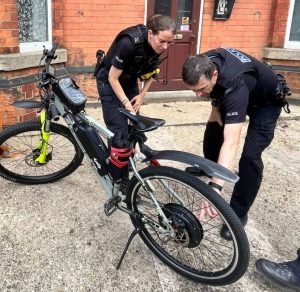
You can ride an electric bike if you’re 14 or over, as long as it meets certain requirements.
These electric bikes are known as ‘electrically assisted pedal cycles’ (EAPCs). You do not need a licence to ride one and it does not need to be registered, taxed or insured.
What counts as an EAPC
An EAPC must have pedals that can be used to propel it.
It must show either:
- the power output
- the manufacturer of the motor
It must also show either:
- the battery’s voltage
- the maximum speed of the bike
Its electric motor:
- must have a maximum power output of 250 watts
- should not be able to propel the bike when it’s travelling more than 15.5mph
An EAPC can have more than 2 wheels (for example, a tricycle).
Where you can ride
If a bike meets the EAPC requirements it’s classed as a normal pedal bike. This means you can ride it on cycle paths and anywhere else pedal bikes are allowed.
Other kinds of electric bike
Any electric bike that does not meet the EAPC rules is classed as a motorcycle or moped and needs to be registered and taxed. You’ll need a driving licence to ride one and you must wear a crash helmet.
Getting vehicle approval for your electric bike
An electric bike must be type approved if either:
- it can be propelled without pedalling (a ‘twist and go’ EAPC)
- it does not meet the EAPC rules
This should have been done by the manufacturer or importer before you bought it. If it’s been type approved, it will have a plate showing its type approval number.

